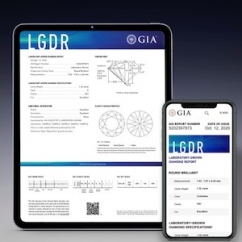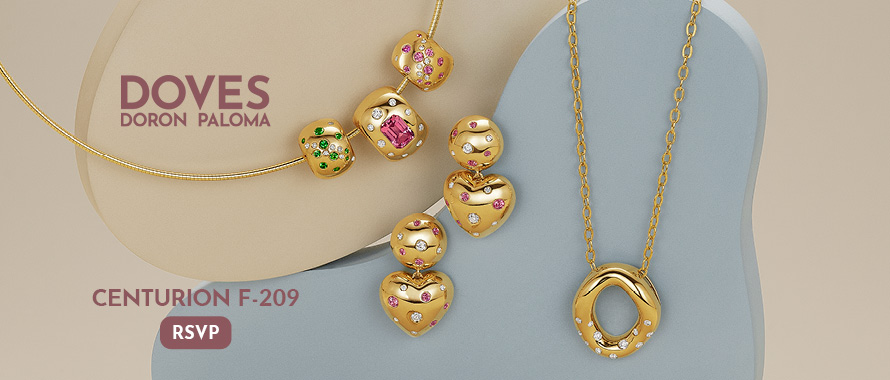Sales Strategy
New GIA Lab-Grown Diamond Reports Add Four-C’s Specifics October 14, 2020 (0 comments)

Carlsbad, CA—GIA (Gemological Institute of America) has introduced a family of four new digital-only reports for laboratory-grown diamonds, with Four Cs color and clarity specifications replacing the descriptive terms and grade ranges previously used on GIA’s lab-grown diamond reports.
The reports, titled LGDR by GIA, come as consumers are showing increased interest in purchasing lab-grown diamonds.
“The evolution of GIA’s reports for laboratory-grown diamonds is fully aligned with our mission to protect all consumers,” said Susan Jacques, GIA president and CEO. “Everyone who purchases gemstone jewelry—whether natural or laboratory-grown—expects and deserves the information, confidence, and protection that come with a GIA report.”
The new reports feature a distinct new look and updated format that are fully differentiated from GIA’s well-known grading reports for natural diamonds:
- The GIA Laboratory-Grown Diamond Report includes 4Cs color and clarity specifications, and plotted clarity and proportions diagrams for D-to-Z laboratory-grown diamonds 0.15 cts and above.
- The GIA Laboratory-Grown Diamond Report - Dossier includes the 4Cs color and clarity specifications and a proportions diagram for D-to-Z laboratory-grown diamonds 0.15 cts to 1.99 cts.
- The GIA Laboratory-Grown Colored Diamond Report includes the GIA color and clarity specifications, and plotted clarity and proportions diagrams for colored laboratory-grown diamonds 0.15 cts and above.
- The GIA Laboratory-Grown Colored Diamond Report – Color Identification includes color specifications for laboratory-grown colored diamonds.
- The new LGDR reports state that the stone was created by either the chemical vapor deposition (CVD) or high pressure, high temperature (HPHT) method and whether it may include post-growth treatments to change the color.
The color and clarity specifications for laboratory-grown diamonds are described on the same scale as GIA grading reports for natural diamonds, but it does not correlate to nature’s continuum of rarity.
Fees for the new reports are the same as for natural diamonds, with the addition of inscription services fees when applicable. Full fee schedules are available at GIA.edu/gem-lab-fee-schedule.
GIA is committed to informing consumers and retailers about the differences between natural and laboratory-grown diamonds, to ensure that consumers clearly understand the product that they are purchasing. Each LGDR report features a QR code linked to a custom landing page on GIA’s website, GIA.edu/LGDR, offering comprehensive information on laboratory-grown diamonds, including what they are, how they are grown, and how GIA definitively identifies them.
All laboratory-grown diamonds submitted to GIA will be laser-inscribed with the GIA report number and the words "LABORATORY-GROWN" to ensure that consumers can clearly differentiate them from natural diamonds. Any stone submitted that is already inscribed with laboratory-grown, laboratory-created, man-made, synthetic or [manufacturer name]-created will only receive the report number inscription.






